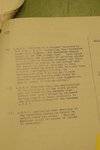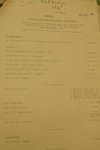A list of the Stations and airfields:
Seven in 11 Group:
Tangmere: Satellite airfields :Westhampnett, Ford
Kenley :Croydon
Biggin Hill:West Malling
Hornchurch: Hawkinge
, Gravesend, Manston. Rochford
North Weald:Martlesham Heath
, Stapleford Tawney
Debden:Martlesham Heath
Northolt: Hendon
Two in 10 Group:
Filton
embry, Exeter, St Eval, Bibury, RNAS Roborough
Middle Wallop :Warmwell, Boscombe Down
Five in 12 Group:
Duxford:Fowlmere
Wittering: Coltishall
Digby:Ternhill
Kirton-in-Lindsey : no satellite
Church Fenton: Leconfield
Five in 13 Group:
Usworth :Catterick
Acklington: no satellite
Turnhouse: Grangemouth, Drem
Dyce :Grangemouth
Wick :Kirkwell, Sumburgh
The Sector stations and airfields with with awere definitely supplied with 100 octane fuel, according to Glider's list: NOTE: Elsewhere there is a photo of 610 Sqn Spitfires being refueled at Hawkinge - the fuel tanker is marked with a 100 octane label.
Looking at the combat reports on Mike Williams site, as well as the stations you've identified, 609 squadron used 100 octane fuel when based at Middle Wallop on 30 September, 602 used it when based at Westhampnett, 610 at Gravesend and 74 at Rochford.



